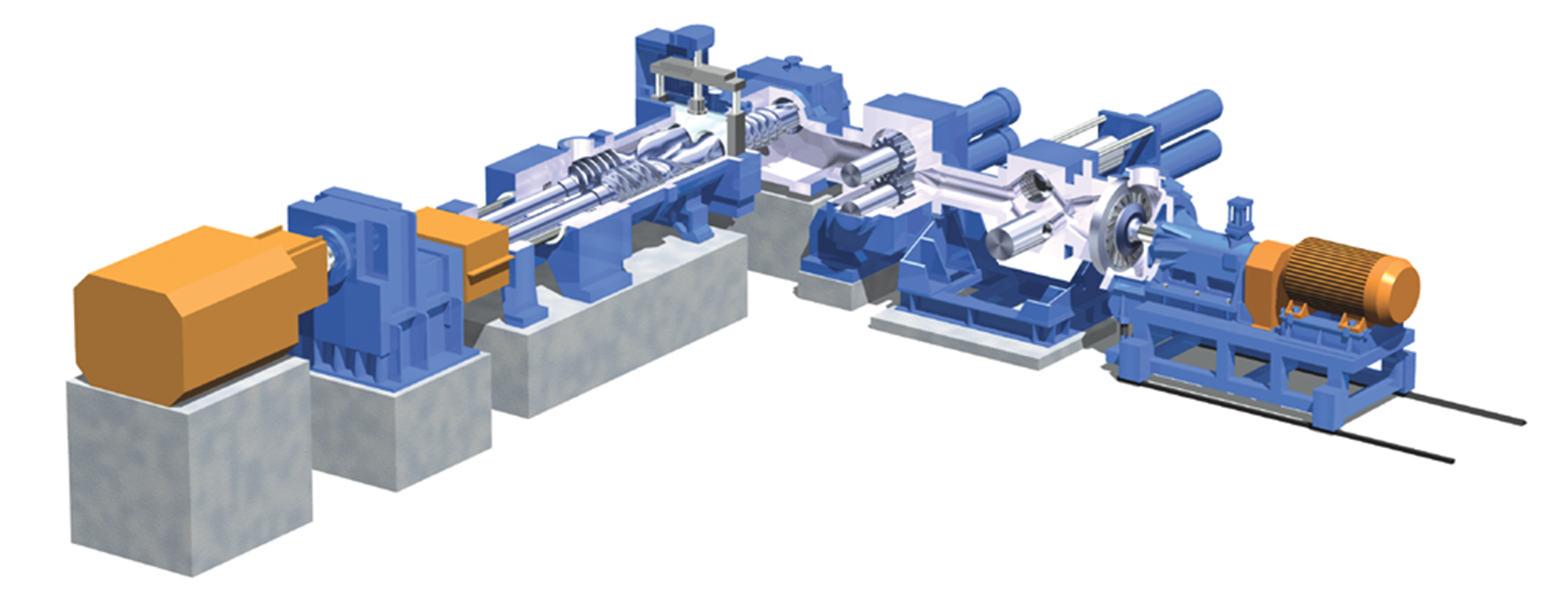March 26, 2024
Kobe Steel, Ltd.
Kobe Steel, Ltd. announces that it has received an order for the polyethylene mixing and pelletizing system LCM560 from Dow. As part of its Fort Saskatchewan Path2Zero Project1, Dow plans to build the world’s first net-zero CO2 emissions (Scopes 1 and 2) ethylene cracker2 and derivatives complex in Alberta, Canada. The system on order will be shipped from Kobe Steel’s Takasago Works around the end of March 2025 and used as core equipment for polyethylene production.
A mixing and pelletizing system is a piece of equipment used in the final segment of a plastic production line at a petrochemical complex to convert various plastic materials, such as polyethylene and polypropylene, into grain-sized pellets. The system is critical equipment that serves as the heart of a plastic processing plant, operating constantly.
Kobe Steel’s LCM plastic mixing and pelletizing systems feature high productivity and durability, allowing continuous operation of over 8,000 hours per year. Since the first delivery of the system in 1980, Kobe Steel has supplied approximately 300 units all over the world and holds a share of over 50% of the global market for polyethylene mixing and pelletizing systems. The strengths of the LCMs are their outstanding mixing performance suitable for polyethylene production and energy-saving performance, realized by combining mixer and gear pump system. In addition, Kobe Steel provides timely technical support to customers in North America based on its after-sales service office established in 2018 in Houston, Texas, USA. These advantages are the reason why the LCMs have been chosen by customers around the world and have led to Dow’s awarding of the order for LCM560.
As a leading manufacturer of polyethylene mixing and pelletizing systems, Kobe Steel will work for the success of Dow’s advanced project aimed at decarbonizing its fleet of assets and contribute to the decarbonization efforts of the global petrochemical industry at large.
The Kobe Steel Group, also known as the Kobelco Group, will continue to provide solutions to the needs of society through its technologies, products, and services that drive the creation of new value in an effort to become a corporate group indispensable to its customers and communities. As we move forward, we strive to realize a world in which people, now and in the future, can fulfill their hopes and dreams while enjoying safe, secure, and prosperous lives.

LCM560 plastic mixing and pelletizing system (an illustrative example)
*
1 Project overview:
Dow plans to achieve net-zero CO2 emissions (Scope 1* and Scope 2**) at its Fort Saskatchewan, Alberta site in Canada by retrofitting existing cracker and building a new ethylene cracker and derivatives complex. The plan is to increase its ethylene and polyethylene production capacity in stages—1.285 million tons in the first stage and additional 0.6 million tons per year, in the second stage. The new production process is designed to convert gas emissions from the ethylene cracker into hydrogen and use it as clean fuel in ethylene production. By capturing and storing CO2 emissions from the site, the company will reduce current CO2 emissions by approximately 1.0 million tons per year, while reducing the increase in emissions associated with the increased production capacity. The project is one of the company’s key initiatives to reduce net greenhouse gas emissions from its production facilities around the world by approximately 30% by 2030 (compared to 2005 levels).
* 2 Ethylene cracker: Equipment for producing ethylene and other chemical materials from ethane contained in natural gas
(Note) The information on this web site is presented "as is." Product availability, organization, and other content may differ from the time the information was originally posted. Changes may take place without notice.